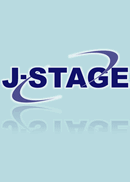Volume 55, Issue 1
Displaying 1-14 of 14 articles from this issue
- |<
- <
- 1
- >
- >|
-
Article type: Cover
2004 Volume 55 Issue 1 Pages Cover1-
Published: April 15, 2004
Released on J-STAGE: November 01, 2017
Download PDF (272K) -
Article type: Cover
2004 Volume 55 Issue 1 Pages Cover2-
Published: April 15, 2004
Released on J-STAGE: November 01, 2017
Download PDF (272K) -
Article type: Index
2004 Volume 55 Issue 1 Pages Toc1-
Published: April 15, 2004
Released on J-STAGE: November 01, 2017
Download PDF (33K) -
Article type: Article
2004 Volume 55 Issue 1 Pages 1-8
Published: April 15, 2004
Released on J-STAGE: November 01, 2017
Download PDF (1133K) -
Article type: Article
2004 Volume 55 Issue 1 Pages 9-15
Published: April 15, 2004
Released on J-STAGE: November 01, 2017
Download PDF (796K) -
Article type: Article
2004 Volume 55 Issue 1 Pages 16-22
Published: April 15, 2004
Released on J-STAGE: November 01, 2017
Download PDF (720K) -
Article type: Article
2004 Volume 55 Issue 1 Pages 23-33
Published: April 15, 2004
Released on J-STAGE: November 01, 2017
Download PDF (1113K) -
Article type: Article
2004 Volume 55 Issue 1 Pages 34-50
Published: April 15, 2004
Released on J-STAGE: November 01, 2017
Download PDF (2106K) -
Article type: Article
2004 Volume 55 Issue 1 Pages 51-58
Published: April 15, 2004
Released on J-STAGE: November 01, 2017
Download PDF (662K) -
Article type: Appendix
2004 Volume 55 Issue 1 Pages App1-
Published: April 15, 2004
Released on J-STAGE: November 01, 2017
Download PDF (64K) -
Article type: Appendix
2004 Volume 55 Issue 1 Pages App2-
Published: April 15, 2004
Released on J-STAGE: November 01, 2017
Download PDF (64K) -
Article type: Appendix
2004 Volume 55 Issue 1 Pages App3-
Published: April 15, 2004
Released on J-STAGE: November 01, 2017
Download PDF (64K) -
Article type: Appendix
2004 Volume 55 Issue 1 Pages App4-
Published: April 15, 2004
Released on J-STAGE: November 01, 2017
Download PDF (64K) -
Article type: Appendix
2004 Volume 55 Issue 1 Pages App5-
Published: April 15, 2004
Released on J-STAGE: November 01, 2017
Download PDF (64K)
- |<
- <
- 1
- >
- >|
